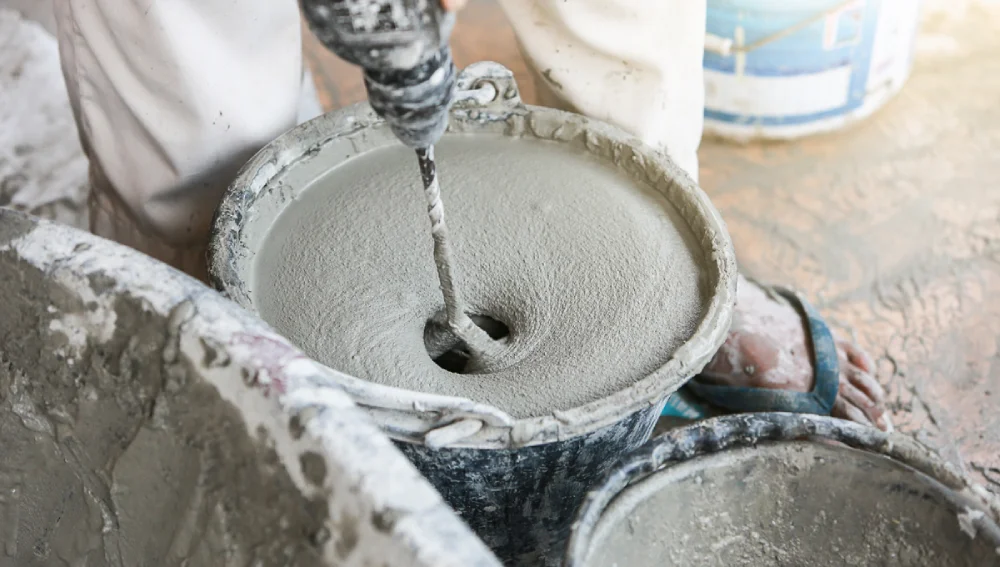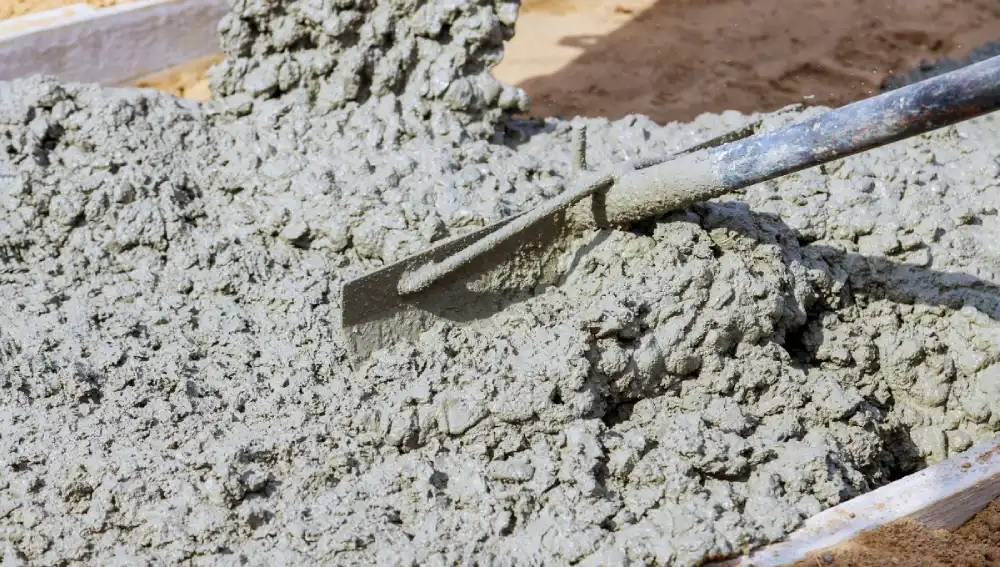Different buildings require different types of concrete mixes. This is where concrete grades come into play. There are several types of concrete mixes. Higher grades are more stronger and durable than lower grades. Low-grade mixes are used for small works and high-grade concrete is used for large construction projects.
In this article, we will learn about M15 concrete, its components, mix ratio, and applications. Read till the end to learn all about M15 concrete.
What is an M15 Concrete Mix?

The M15 concrete has a compressive strength of 15 N/mm² (Newton per square millimetre). This is achieved after 28 days of curing. Its standard mix ratio is 1:2:4, which means 1 part cement, 2 parts sand, and 4 parts aggregate.
An M15 concrete is a nominal mix concrete. A nominal concrete mix has a fixed ratio that gives an approximate estimate of the materials required to make the concrete.
Key Components of M15 Concrete
An M15 concrete is made of cement, sand, and aggregate. They are mixed in specific ratios and hydrated with water to create the perfect M15-grade concrete mix.
Functions of Each Component
- Cement: Cement acts as a binding agent responsible for holding all the components together. It gives the concrete strength.
- Sand: Sand includes fine aggregate particles that fill the void in the concrete mix. They create a dense concrete mix and improve workability.
- Aggregate: Coarse aggregate includes large particles like gravel or stone chips. They provide stability and strength to the concrete.
- Water: Water hydrates the components and starts the chemical reaction that stimulates hardening.
Factors Affecting M15 Concrete Ratio

As discussed above, though M15 is a nominal concrete mix with a predetermined mix ratio of 1:2:4, it is just an estimation. The actual amount of each material required may vary depending on several factors, like the ones below.
The Properties of Each Material
The specific properties and quality of each material can affect the M15 mix ratio.
- The type of cement used can affect the water-cement ratio. This can alter the overall mix proportions.
- The fineness and moisture content of the sand can impact the water-cement ratio.
- The type and size of the aggregate can influence the volume of voids and impact material proportions.
Exposure Conditions
The weather conditions under which the concrete mix is exposed can influence the mix ratios.
Compressive Strength
The compressive strength of an M15 concrete is fixed. However, if the construction project requires a lower or higher compressive strength, it might affect the material proportions.
Admixtures
Admixtures include water reducers, plasticizers, etc. They can affect concrete properties and material proportions.
Workability
Workability is the concrete’s ability to be mixed, placed, and compacted into shape. This can influence the amount of water and admixtures used and affect the overall mix proportions.
M15 Concrete Applications
M15 concrete is a concrete of moderate strength. It has several applications and can be used in areas that require moderate strength. Some major areas where M15 concrete is used include:
- Pavements or pathways
- Plastering walls and ceiling
- Beams, flooring, lintels, and leveling
- Stairs and steps
- Small-scale foundations
- Farm sheds, water tanks
M15 Concrete ratio
The standard mix ratio for M15 concrete is 1:2:4. This means:
- 1 part of cement
- 2 parts of sand (fine aggregate)
- 4 parts of aggregate (coarse aggregate)
This ratio ensures the right balance between the strength, durability, and workability of the concrete.
Standard Concrete Mix Ratios
The purpose of construction determines the grade of concrete. There are several grades of concrete and mix ratios. The below table shows the concrete grade, mix ratio, and compressive strength.
| Concrete Grade | Mix Ratio | Compressive Strength |
| M5 | 1:5:10 | 5 MPa (725 psi) |
| M7.5 | 1:4:8 | 7.5 MPa (1087 psi) |
| M10 | 1:3:6 | 10 MPa (1450 psi) |
| M15 | 1:2:4 | 15 MPa (2175 psi) |
| M20 | 1:1.5:3 | 20 MPa (2900 psi) |
| M25 | 1:1:2 | 25 MPa (3625 psi) |
Tips for Successful M15 Concrete Mixing
A perfect M15 concrete mixing ensures a building’s stability and durability. The following are some tips you can follow to get a successful M15 concrete mix.
- Mix the components in the right proportions. Look into the ratio of each component and use the right amounts.
- Ensure you use weighing machines to get the right amount of each particle.
- Ensure you use the right water-cement ratio. Mix the concrete mix with water for a considerable amount of time to ensure uniform mixing.
- Ensure you get high-quality materials for your concrete. They should be clean and without any contamination or organic matter.
- Cover the concrete mix with burlap bags or plastic sheets to prevent rapid drying.
Conclusion
M15 concrete is used where only moderate strength is required. The nominal mix ratio for this concrete is 1:2:4, which means 1 part cement, 2 parts sand, and 4 parts aggregate.
As discussed above, though the mix ratio is predefined, several conditions can affect material proportions. So, ensure you are thorough and consider all factors before determining the amount of each material used for the concrete. You can discuss with a professional if you have any doubts or concerns before preparing the mix.
FAQs
A nominal mix ratio has a fixed ratio. It is an approximate estimate of the materials required to make the concrete.
The concrete mix ratio of M10, M15, and M20 concretes are 1:3:6, 1:2:4, and 1:1.5:3.
An M15 concrete has a compressive strength of 15 N/mm² (Newton per square millimetre) after 28 days of curing. The standard concrete mix ratio is 1:2:4, which means 1 part cement, 2 parts sand, and 4 parts aggregate.

